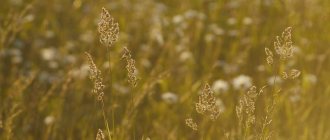Red Rose
I don’t remember exactly when and why I fell in love with these flowers. Roses seem the most beautiful to me. Their red buds are mentioned in literary works, they are usually given as holiday gifts, and in children's fairy tales they are described as prickly plants with sharp thorns. Of course, the stem of a rose can easily hurt you, but these flowers are so beautiful that you can’t take your eyes off them. I have several reasons to love them:
- petals come in completely different shades;
- flowers last a very long time in a vase and retain their freshness and beauty;
- an indescribable aroma unlike anything else.
I really like to walk through our city park, because there are a lot of flower beds with my favorite plants. During the flowering period they look simply amazing.
Lately I don’t even cut or buy bouquets for myself, because I really love looking at a living flowering bush.
Next season I will ask my parents to make a rose garden at the dacha and plant different varieties of roses there. Let it be a huge multi-colored flower bed with large fragrant buds. This is my dream.
Description of the tulip flower
The examples presented will help you describe a tulip for children in an artistic style.
Tulip plant description
I would say my favorite flower is the tulip. This flower is very fragile and so delicate that it takes your breath away.
Tulip reminds me of a beautiful young girl. This is probably due to the slenderness of the flower. Tulips bow their heads just as modestly before they bloom. A tulip bud on a flexible straight stem is a real work of art. Their petals are so delicate, as if they were made of silk or some other magical fabric. You touch them and you’re afraid to dent them.
Tulips come in a variety of colors. The most common ones are red, and inside there is a yellow cup with pollen framed in black. Such tulips grow, for example, in my grandparents’ garden. And there are also soft pink, yellow, white, spotted tulips, with and without fringe, and also scarlet and purple! There are so many varieties of tulips! Flower growers have even brought out black tulips, they are simply beautiful.
Tulips are very beautiful when they bloom. And the most wonderful tulips I have ever seen grew in a flowerbed near the theater. They were of a rare variety. These tulips had a soft pink color, even white-pink, the shade was so delicate. And the sun shone through the thinnest petals. On the lawn grass of the flower beds, these tulips looked simply divine.
Text description of the tulip plant
Tulips are spring flowers that are a symbol of spring and warmth. Tulips amaze with their rich and bright color.
Tulips have come a long way to our country. We find the first mention of these flowers in Persia. Only in the middle of the 16th century were tulips brought to Europe, where they began to be very successfully introduced in different countries. Some peoples, such as the Dutch, were so captivated by the charm of these amazing flowers that they even abandoned their production and farms to grow tulips. This love of flowers has led to the fact that today the bright tulip bulbs are a symbol of the Netherlands.
Holding a bouquet of yellow, red and even purple tulips in your hands, you want to enjoy life even more. With their grace and at the same time unpretentiousness, they emphasize the power of nature, which awakens and renews itself. And if you ask me what the best gift is for me, I will answer that it is an armful of plump and round tulips with juicy red petals.
Text description of the tulip 3rd grade
The sight and smell of tulips fill us with joy, serenity and tranquility. Tulip petals give a unique look to the flower, creating an atmosphere of friendliness and fidelity. The stem of this flower resembles a slender girl. It is very thin and greenish. It is very difficult to imagine how the stem can support the powerful head of the flower. And its gorgeous leaves? When you see them, you just want to smile and rejoice.
Tulips come in a variety of colors. The most common ones are red, and inside there is a yellow cup with pollen framed in black. Botanists of the 21st century include the Tulip
more than eighty species.
Anyone can write a text description about the tulip and share it through the comment form.
Lily of the valley scent
I don’t really like cold and frost, and, accordingly, winter. I love warm spring days, when everything around me comes to life, grass grows and flowers bloom. The trees are putting on their green attire, the bees are buzzing and the holidays are approaching.
It was at this time that the most beautiful spring flower, the lily of the valley, blooms in my mother’s garden . Its thin stem is simply strewn with white balls, which, when blooming, resemble bells. It is impossible to pass by this flowerbed, because even if someone is not amazed by the beauty of the charming plant, the aroma will involuntarily attract every passerby.
Wild lily of the valley grows in the forest. There it receives little sunlight, but does not lose its natural beauty. It has amazing vitality, and these snow-white glades grow tens of meters. It blooms for no more than a month, and in place of the bells, scarlet berries appear, which cannot be eaten, as they are poisonous.
I really love lilies of the valley. They give me a good mood, they say that spring has come and delight me with their delicate beauty.
Popular writings
- Essay Youth is the future of the country
They say that youth is the best period of human life, because then a person is carefree and has nothing to worry about - he does not feed his family, does not raise children... But is this statement true? - Essay The meaning of the title of the novel Fathers and Sons (grade 10)
The meaning of the title of the novel “Fathers and Sons” by I.S. Turgenev lies in the versatility of the hidden subtext, because the eternal problem - Essay Pharmacy of my dreams
Progress does not stand still, everything develops, changes, improves. Most companies do everything for the comfort of their customers. It's hard to imagine how people lived before without modern conveniences
Favorite chamomile
There are many flowers in the world, they all differ in appearance, number of petals, color, flowering period, aroma, and so on. I love chamomile very much, I have pleasant memories associated with it, and seeing this flower, I always immerse myself in them.
Of course, I like both roses and chrysanthemums, but chamomile makes me happy the most . She is like the sun and can often be found walking in nature. This is a pure and modest flower that exudes a very pleasant, unobtrusive aroma.
Not far from our house we have a whole chamomile field, where I always take a walk during the flowering period. I collect myself a huge bouquet, weave a wreath, and just enjoy the white “carpet”. I lie among the daisies, pick one flower, and guess on it: whether he loves or does not love.
Next year I want to make my own chamomile bed in the yard so that it will delight others. I already have a project and a drawing of what it will be like. And I will definitely do it.
Chamomile is not only beautiful , but also very useful . A decoction of it helps cope with skin inflammation, while chamomile tea calms the nervous system. This is a stunningly beautiful wildflower that gives mood and improves well-being.
Chamomile is my favorite flower
Long ago, in childhood, my parents and I went to the village to visit my grandmother in the summer, where there were many deciduous and coniferous forests, where we usually went to pick mushrooms and berries. But between these forests lie fields and meadows with numerous flowers. But among all the flower diversity, I was most struck by daisies. They grow in patches that from a distance seem like sunny islands.
How unusually nature painted this flower! Among the lush greenery, bright yellow centers with the most delicate snow-white petals stand out, as if painted with a thin artist’s brush. It is impossible not to fall in love with this miracle of nature! So for me, chamomile has since become my favorite flower.
Then, as children, upon returning from the forest we always picked a huge bouquet of daisies. I remember how on the way home everyone was telling fortunes with daisies, tearing off one petal at a time from the yellow center, saying: “loves - loves not.” This comic fortune-telling was taught to children by adults and they themselves were involved in this activity with pleasure. I will remember these tearing off petals for the rest of my life!
And what wonderful head wreaths you can make from these suns on legs. Their tenderness and beauty cannot be compared with any flower.
I am amazed by its aroma, completely unlike anything else in the world. Inhaling it, I involuntarily return to that meadow from my childhood and again wonder and weave wreaths in my mind.
I also remember how my grandmother dried chamomile flowers and during many illnesses she always brewed them for us. Of all the medicinal folk remedies, chamomile infusion was and remains the most pleasant and beloved. Until now, I prefer to treat them, especially during a cold.
To always admire and remember my childhood, I have a large painting hanging on the wall in my room depicting a bouquet of daisies in a vase. I even have a dress with daisies in my wardrobe, and I also have a set of bed linen with them in stock. And in the summer, my favorite fresh flowers are always on my desk.
Russian language. 5th grade
Other essays: ← My favorite fairy tale by Pushkin↑ 5th grade What I like to do and why →
Wonderful tulip
Flowers are a real miracle. They are tender and beautiful, fragrant and unique. After all, each individual flower is different from the other. My favorite plant in 3rd grade was the peony, but now I really love tulips. For me this is a symbol of spring, beauty and international women's day. Every year on March 8th, Dad gives Mom and me a bouquet of these stunning flowers.
I especially love barely bloomed tulip buds. They are fresh, young and flavorful. At our dacha, my mother planted a huge flowerbed of tulips. They come in a variety of colors:
- purple;
- yellow:
- red;
- burgundy.
I really like flowers whose petals change from red to white. It looks very beautiful and gentle. Every year I wait for spring to watch the tulips bloom in our garden. I help my mother care for and water them, and this is a real pleasure for me.
Writing an essay about a rose or a snowdrop is not at all difficult. You just have to look at your favorite flower and write a description of it. Any mini-story or text will turn out interesting if the student really loves flowers.
Essay My favorite flowers Tulips
I really love tulips. For some reason, it’s not roses or daisies that give me this feeling.
Tulips are so strict, so bright. For me, they also signify the arrival of real spring. They like to buy them in May and cut them at their dachas. They are often carried to the fire on Victory Day...
And in our city they plant so many tulips for May. Almost like in Holland. They are planted in shaped flower beds in the city park. For example, it looks like flames on the grass - red, yellow. And it seems to me that tulips literally glow from the inside. Often their core is yellow. And the black stamens are very beautiful. They do not smell sweet, but have a slightly bitter aroma. I also like this more than the sweet smell of other flowers. And now the roses either don’t smell, or they smell like raspberries and carrots. You can always buy a rose in a store - it’s not interesting. But tulips are too delicate to manage. They mean spring!
Of course, at our dacha, my grandmother plants tulips. And all the neighbors too. And it's so cool! Most of all, as you might guess, I like red ones, but they just come in all colors.
I also like tulips, even when they have already bloomed. Often the petals hang on the stem like this, but this is also beautiful, and the petals that fell around the stem to the ground look like sparks.
I enjoy looking at photographs of Holland blooming with tulips - it’s so beautiful there! Now tulips even come with fringe on the petals. Big, small - so many varieties have been developed! I would go to Holland - to the main park in the spring. So many beautiful photos you can take!
And it’s also funny that when you bring home tulips that have not yet blossomed, they are in buds with their long leaves and just look like grass, like an onion. But gradually they “flare up” and bloom in the vase. You can admire it for hours. And by the way, they don't have thorns. These are normal, non-aggressive flowers. And that feeling that everyone’s favorite rose considers itself such a beauty - don’t come near it, but the tulip is a modest but beautiful flower.
Essay on the topic my favorite flower is the tulip
Tulips. Author Elena Vetrova. Photo by the author. Family Liliaceae. Liliaceae. Tulip. Tulipa. Tulip is a herbaceous, perennial, ephemeral (short growing season) bulbous plant. Tulips are frost-resistant and easily tolerate mild spring frosts. The height of plants, depending on the variety, ranges from 10 to 100 cm. About 150 species of wild tulips are found in nature in Europe, Central Asia, North Africa, northern India, and Iran. More than 6,000 varieties have been bred. It is clear that you can get acquainted with a huge variety of varieties in almost any flower shop, although of course the choice offered at the Amsterdam flower market remains unsurpassed. This is what the pavilion windows at this market look like. Residents of Amsterdam often buy bouquets of tulips (preferably orange) to decorate their homes. The first information about the tulip dates back to the 11th century, it was depicted in the handwritten Bible. Wild tulip species have been known in Rus' since the 12th century. The word tulip comes from the Persian “toliban” - turban. The stem of a tulip is a bulb and peduncle with leaves, erect, cylindrical. Tulip leaves are elongated-lanceolate, the edge of the leaf blade is smooth or slightly wavy. The leaves are arranged alternately, enveloping the stem. The color of the stem and leaves is pale green, bluish. The first leaf of a tulip is always the largest, and the top, last leaf, which is also called the “flag,” is always the smallest. Both the stem and leaves have a waxy coating. A tulip flower consists of 6 petals arranged in two rows, 6 stamens with large pollen sacs and a pistil. The flowers of hybrid tulips have a wide variety of shapes: from simple goblet-shaped to complex double. On their petals you can find the finest shades of any color. All petals of one flower have the same colored base, which is also called the “bottom”. Most often, this shade differs from the main color of the petals. “Ivory Floradale.” “Black Parrot.” “Mount Tacoma.” The fruit of a tulip is a triangular shaped box. The seeds are flat, brownish-brown, triangular in shape, arranged in even rows. The tulip bulb is covered with a dark leathery shell. The bulbs live for about 2.5 years (and the stem, flower and leaves only 3 - 4 months). It is best to dig up the bulbs annually and store them in a dry, ventilated area until autumn planting. As soon as most of the leaves turn yellow, but not all (!), and the stem wilts a little, but does not dry out (!), the bulbs can be dug up, dried, old roots removed and cleared of soil. After a week, they can be put away in boxes or drawers, laid out in one layer and sprinkled with fern leaves. To collect the bulbs, you need to choose sunny, hot weather, but if you had to dig them up in the rain, then immediately the entire “harvest” must be kept in a 0.2% solution of potassium permanganate for 30 minutes and dried. Tulip bulbs are planted in the fall, when the soil temperature is approximately 10 C, placing them at a distance of 10 cm. When planting, you need to pour a little wood ash into each hole and be sure to mix it, as well as chopped sprigs of rosemary, milkweed or wormwood. Mulch with compost, but not peat. At the end of autumn, cover the tulip planting sites with fern leaves and juniper or spruce branches. In spring, remove the cover immediately after the snow melts, as this is the time for sprouts to appear. In 4 weeks, early varieties will bloom. Tulips can also be propagated by seeds. But it should be remembered that when propagating from seeds, the characteristics of the selected variety are almost never repeated. One of the first detailed descriptions of this fascinating, long-term method of obtaining new plants can be found in the articles of the Russian philosopher, botanist, agronomist, and writer Andrei Timofeevich Bolotov (1738 - 1833). Bolotov was an honorary member of the Imperial Moscow Society of Agriculture and his articles on gardening were regularly published in the Agricultural Journal. It was according to Bolotov’s project and with his active participation that the first landscape park in Russia was founded. If you nevertheless decide to start breeding tulips using seeds, then the first thing you need to do is be patient for 10 - 12 years. Now choose the tulip from which you decided to get the seeds, tie the peduncle to a support and wait for the box to fully ripen. When it becomes completely dry, slightly cracked, and the seeds are brownish in color, the peduncle is carefully cut off and, without removing the seeds, stored in a dry, dark place until autumn planting. It is better to sow tulip seeds in August or early September, on a prepared bed and quite often, since their germination rate is low. The soil in the garden bed should be fertile, loose, with a sufficient amount of sand. Here the seeds will live for three years. In the first spring, immediately after the snow melts, thin sprouts appear in the form of a tubular leaf with a slightly curved tip. By summer, the young tulip will have formed a main root with a stolon. But the root soon dies, and adventitious roots immediately appear in large numbers. In the spring of the second year, the leaves of young plants noticeably increase in size. And only in July of the third summer can you get the “first harvest” - these are the smallest light bulbs. They are dried a little, the best are selected and again buried in a specially prepared new ridge with fresh fertile soil for another three years. All these years, the bed is kept perfectly clean, since any powerful weed will destroy the tender roots of young tulips. You cannot loosen - only mulch. The soil should not dry out. For the winter, the bed is certainly covered with fern leaves and spruce or juniper branches alternately, and this will protect the tulips from cold, wind and rodents. Only in the sixth (!) spring will it be possible to see the flower for which all this painstaking work was done. Here it will become clear that the flower is not large, the color is unexpected and pale, and the shape of the petals is the simplest. But don’t be upset, this is only one of the stages of selection work and there is still more to come. The real color will begin to appear only after 2–3 years. And only at the 12th year, the color and shape of the petals will reach maximum brightness and expression. But at this stage the selection work does not end, but one might say it is just beginning. After all, selection is an art! Nikolai Ivanovich Vavilov wrote in 1939 about selection as a young science, but emphasized: “ah, in the past it was more of an art!” . Tulip selection was first started in Turkey, back in the 15th century. And already in the 16th century, the first collection of 300 new varieties was collected. From here, in 1554, the first tulip bulbs and seeds moved to Europe, to Vienna, to the garden of medicinal plants in the Botanical Garden at the court of Emperor Maximilian II. The director of the garden was professor of botany K. Clusius (Charles de l Ecluse), who immediately began breeding experiments with tulips. In 1593, he moved with his bulbs to the Netherlands and planted his collection of tulips, as well as tulips from Central Asia, in the Botanical Garden of Leiden. Tulips will bloom for the first time in the Netherlands next spring. And these flowers will begin a new life. From here their bulbs will be brought to Russia in 1702. The extraordinary popularity of tulips in the 17th century and later was reflected in the work of European masters of painting, creators of tapestries, tiles and tableware. Its examples are superbly presented in the collections of the Rijksmuseum “RIJKS MUSEUM” in Amsterdam. There are rich tapestries and graceful still lifes by Hans Bollongier. 1639. Balthasar van der Ast. 1625 – 1630. Jacob Marrel. 1634. Clara Peeters. 1615 – 1620. and luminous fine porcelain from Germany and Holland Ansbach end Parseleinfabriek den Haag. Meissener Porzellan Manufaktur. Porzellanmanufaktur Nymphenburg 1777-1790. 1750-1760. 1765-1770. and tiles from Delft Delft. 1750-1775. Tulips easily take root in any garden: in a well-groomed one, in an abandoned one, in a large palace garden, or in a small front garden. Tulips will support any existing or imagined style. Tulips will complement the most incredible range of colors and enhance one dominant color in the garden. "Black Hero" “White Elegance.” The vegetable garden is also a very good place for tulips. Where tomatoes, pumpkins, zucchini and squash are located in the summer, it’s a bit empty in the spring and this can easily be corrected by planting tulips, for which this is their prime time. One of the strongest schools of tulip specialists is, of course, Dutch, and the “exhibition” where you can get acquainted with the achievements of this school in as much detail as possible is the Koukenhove garden (see the article “Kookenhove. Holland”). There is a wide variety of modern and old varieties presented there, and their characteristics and capabilities are clearly demonstrated by the inclusion of compositions of flowering plants in the landscape of the park in the English style. Further in this article, as examples, only a few photographs are given of only a small part of the varietal wealth of the Koykenhov garden and these illustrations do not repeat what is presented in the article “The Many Faces of the Tulip”.




